The NFL is now in its 25th 21st-century season, making for a good time to take stock of the game’s modern-era greats. Here is the league’s All-21st Century team.
1 of 28
Quarterback: Tom Brady
Scott Winters/Icon Sportswire
This space views Brady and his top rival as much closer than the ring-counting public does, as Manning was a seven-time first-team All-Pro (Brady tallied three) who smashed records despite diminished skills and reached Super Bowls with four head coaches. Arguments can be made for Manning being the better quarterback, but in terms of accomplishments and longevity, Brady is without peer. Bill Belichick’s defenses certainly boosted Brady by providing wider margins for error, but the seven-time Super Bowl champ submitted a second-team All-Pro season at age 44, doing so after becoming the Buccaneers’ missing piece. Patrick Mahomes is off to a better start; he will need to stay at this a while to truly challenge the 21st century’s premier player.
Second team: Peyton Manning
2 of 28
Running back: LaDainian Tomlinson

Charles Baus/Icon Sportswire
Trading down from the Michael Vick draft slot benefited the Chargers, who nabbed this century’s most complete back. Tomlinson shined in a bygone era, being the top running back during the bellcow role’s final years. While Henry has dominated his era, LT gave the Bolts a true three-down option. Tomlinson posted a 100-catch season (2003), and his 2006 TD mark (31) has not been approached. Was he on the Walter Payton-Jim Brown-Barry Sanders level? Probably not. But the 11-year veteran was about as good as it got this century. Henry is a throwback who has bucked the modern expiration date at the position. The two-time rushing champ has secured Canton entry one day.
Second team: Derrick Henry
3 of 28
Running back: Adrian Peterson
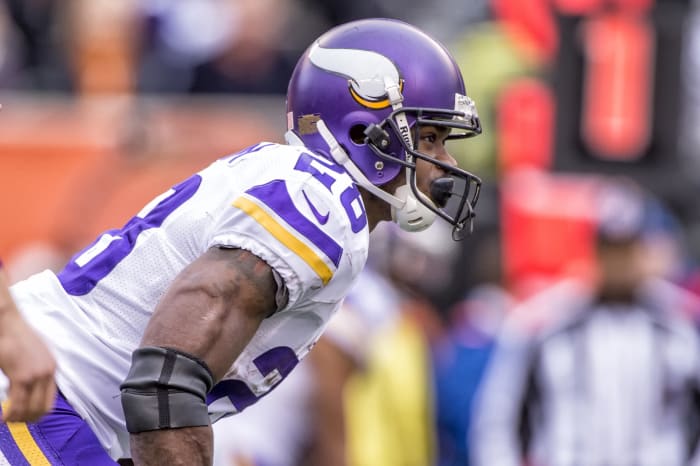
MSA/Icon Sportswire
All-Decade teams have included two backs in the past, and Peterson’s three rushing titles make him impossible to exclude. “All Day” did not offer the aerial skills Tomlinson did, but he won three rushing titles to LT’s two and, more notably, spread his crowns seven years apart. Peterson blazed to his third rushing title at age 30 in 2015, but his second will be the one remembered. The most recent non-QB MVP, Peterson earned it by dragging an unremarkable Vikings team to the playoffs after a 2,097-yard season — eight shy of Eric Dickerson’s record (on 31 fewer carries). These have been rough decades for the fullback, but Neal (Tomlinson’s lead blocker who earned All-Pro acclaim at 37) is the pick.
Fullback: Lorenzo Neal
4 of 28
Wide receiver: Randy Moss

Richard C. Lewis/Icon Sportswire
The debate here resided between about Nos. 2-8. Moss faced earned criticism for frontrunning, but no receiver presented scarier defensive assignments. Not a master of the route tree like Harrison, Moss nevertheless tilted the field and helped two of the greatest offenses in NFL history. Moss’ rookie year does not factor in here, but his 30-year-old version turning Tom Brady from a well-regarded QB with unremarkable stats into a runaway MVP does. While Brady’s TD record has fallen, no one has approached Moss’ 23 receiving scores. Aided by Manning naturally, Harrison broke the NFL’s single-season catch record by 20 and soared to eight straight Pro Bowls during his heyday, remaining elite until age 34.
Second team: Marvin Harrison
5 of 28
Wide receiver: Terrell Owens

Frank Polich/Icon Sportswire
We will devote this section to red-flagged greats. Owens burned a few bridges and was not tied to historically explosive offenses like Moss or Harrison, but when on the field, T.O. was one of the safest production bets in NFL history. Dazzling with a brigade of very good (but not great) QBs, Owens earned five first-team All-Pros — getting there in three cities — and famously entered three-digit yardage territory in Super Bowl XXXIX not long after suffering a broken leg. Brown somehow managed to eclipse T.O. for distractions, but he did the most to give Ben Roethlisberger an opportunity for A-list stats. Big Ben’s pre- and post-AB numbers are noticeable. That creates a smooth Canton path for the QB. Like Owens, Brown may need to wait due to his antics.
Second team: Antonio Brown
6 of 28
Flex: Tyreek Hill

Jamie Germano / USA TODAY NETWORK
The obvious caveat here: receivers have it easier today. Rule changes geared toward offensive maximization have unleashed a number of pass catchers — none more than Hill, one of the most explosive players in NFL history. Perhaps not the complete player or physical specimen as some omitted 21st-century pass catchers, but his back-to-back 1,700-yard Dolphins seasons — as the Chiefs have lacked similar explosiveness since his 2022 departure — have cemented the controversial player as one of the greats. Hill has extensive slot experience; Welker mastered the position and elevated its profile, being part of the Patriots’ 16-0 regular season and helping the Broncos set some still-standing records six years later.
Second team: Wes Welker
7 of 28
Tight end: Rob Gronkowski
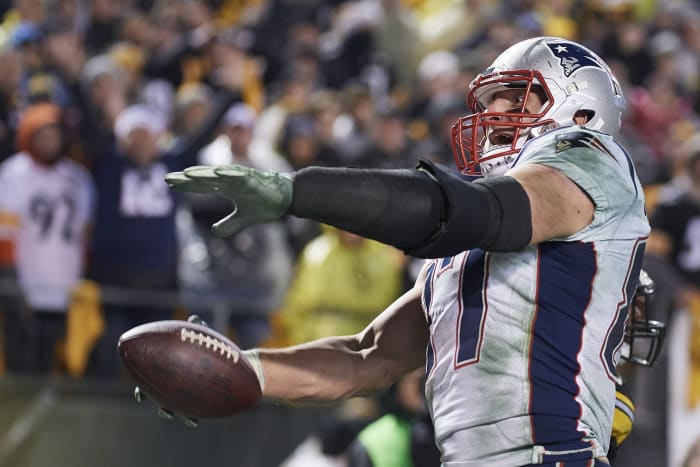
Shelley Lipton/Icon Sportswire
Kelce’s Patrick Mahomes-sidekick brilliance aside, no tight end has brought mismatches on Gronkowski’s level this century. Brady’s down years in 2019 and 2022 featured other issues, but Gronk’s absence was among them. The all-around tight end boosted the Patriots in the run game and did as much as any non-Brady performer to keep their championship window open during the 2010s. Gronk’s arrival did plenty to extend his QB’s prime to an unprecedented length; his rounding into form early in the 2014 season revitalized the Pats post-“On to Cincinnati.” Statistically, Kelce tops everyone, ripping off seven straight 1,000-yard years. He joins Gronk as a four-time first-team All-Pro; his skills and durability saved the Chiefs post-Hill.
Second team: Travis Kelce
8 of 28
Tackle: Walter Jones
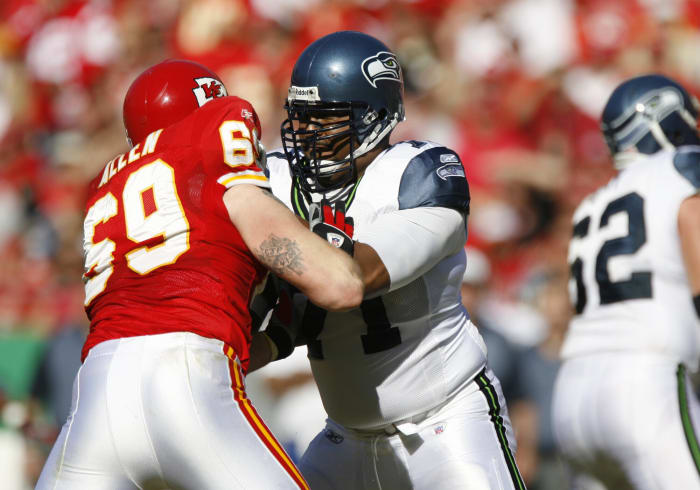
WD/Icon Sportswire
The Seahawks franchise-tagged Jones three times, illustrating the value he brought. Only one of the 1997 first-round pick’s nine Pro Bowls came in the ’90s, and he was vital for a Seahawks team that did not feature A-listers at quarterback, wide receiver or tight end during their Mike Holmgren-era run. Jones helped keep Matt Hasselbeck clean and teamed with Steve Hutchinson to drive Shaun Alexander to the 2005 MVP award. A Browns ironman who did not miss a snap until his 11th and final season, Thomas earned six first-team All-Pro nods despite playing for mostly woeful teams (one of which went winless). He also did not compete with the level of LT talent Jones and Co. did.
Second team: Joe Thomas
9 of 28
Tackle: Jonathan Ogden

Joe Murphy/Getty Images
A 6-foot-9 specimen, Ogden was among the best athletes to play the left tackle position and went 11-for-11 in Pro Bowls during the years he played the position in the pros. The late ’90s and into the 2000s represented a golden age of tackles, and Ogden vied with Jones, Orlando Pace and, for a bit, Tony Boselli for the heavyweight belt. Baltimore’s 2000 defense received deserved acclaim; Ogden was the only Pro Bowler on offense, earning first-team All-Pro acclaim protecting Trent Dilfer that year. The better tackles, on the whole, play on the blind side. Johnson, however, has been a 12-year Eagles starter on the right side, helping both LeSean McCoy to a rushing title and joining Jason Kelce in boosting the Carson Wentz and Jalen Hurts teams.
Right tackle: Lane Johnson
10 of 28
Guard: Zack Martin
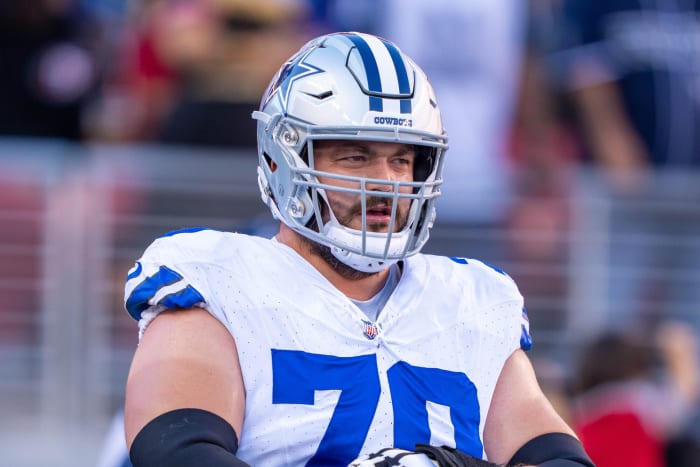
Kyle Terada-Imagn Images
The Cowboys produced three rushing champions in five seasons, doing so with two backs — DeMarco Murray and Ezekiel Elliott. Over the past 50 years, no other team has seen two backs win a rushing crown in the same decade (excluding strike seasons), let alone a three-year period. Martin, Tyron Smith and Travis Frederick led the charge to elevate Murray and Elliott. Martin has become the top cog among those first-rounders, presenting the Cowboys with durability and unmatched accolades. Martin’s seven first-team All-Pro cameos tie Hall of Famers John Hannah and Randall McDaniel for the guard record. Faneca tallied six first-team All-Pros from 2001-07, being part of two Steelers championship teams and being a vital piece early in the Ben Roethlisberger era.
Second team: Alan Faneca
11 of 28
Guard: Steve Hutchinson
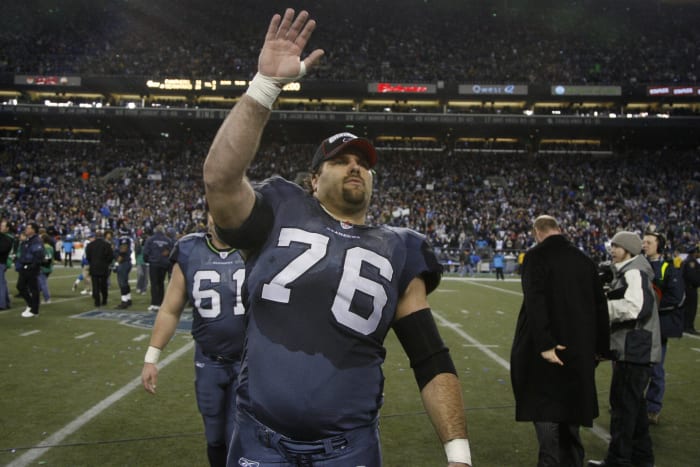
David Gonzales/Icon Sportswire
Known for both his Hall of Fame honor and being part of a transaction that created a contract war between the Seahawks and Vikings, Hutchinson was instrumental in the success of both Shaun Alexander and Adrian Peterson. Prior to the Vikings poaching the restricted free agent, Alexander had an all-Hall of Famer left side to run behind. The Jones-Hutchinson wall powered Seattle to Super Bowl XL. Hutchinson then snared three more First Team All-Pro appearances in Minnesota, helping to unleash Peterson and enable a dominant age-40 season from Brett Favre. Allen might be the best guard of all time, but not enough of his prime occurred in the 2000s to bump out 21st-century-only blockers.
Second team: Larry Allen
12 of 28
Center: Jason Kelce

Eric Hartline-Imagn Images
Few players can match Kelce’s post-30 work. Left off the 2010s’ All-Decade team despite entering the NFL in 2011, the Eagles center gained steam (and skyrocketed in popularity) after age 30. Other centers faced a roadblock for the position’s title belt of sorts, with Kelce receiving six first-team All-Pro placements from 2017-23. Kelce helped Philly to a title without its starting quarterback and then returned to the Super Bowl as the “Tush Push” fulcrum. Mawae is not in Kelce’s league for Q rating, but he delivered for three franchises — the Jets and Titans post-2000. Mawae was a driver for Curtis Martin’s success into his 30s and wrapped his career by doing plenty to ensure “CJ2K” entered the lexicon.
Second team: Kevin Mawae
13 of 28
Defensive line: Aaron Donald

Cary Edmondson-Imagn Images
Pro Football Focus’ Meryl Streep, Donald made a case as the greatest defensive tackle in NFL history. The three-time Defensive Player of the Year had to navigate O-linemen with fewer restrictions compared to the likes of Joe Greene and Alan Page, and he submitted eight dominant seasons — to go with a strong rookie year and an injury-shortened 2022 — to elevate the Rams defense while terrifying opposing interior O-linemen. Retiring in his prime, Donald finished a few seasons as the NFL’s best player and probably should have earned Super Bowl LVI MVP honors. Williams earned All-Decade props for the 2000s and was part of multiple Vikings nuclei, some that housed the Williams Wall (feat. Pat Williams), that ventured to five postseasons.
Second team: Kevin Williams
14 of 28
Defensive line: J.J. Watt
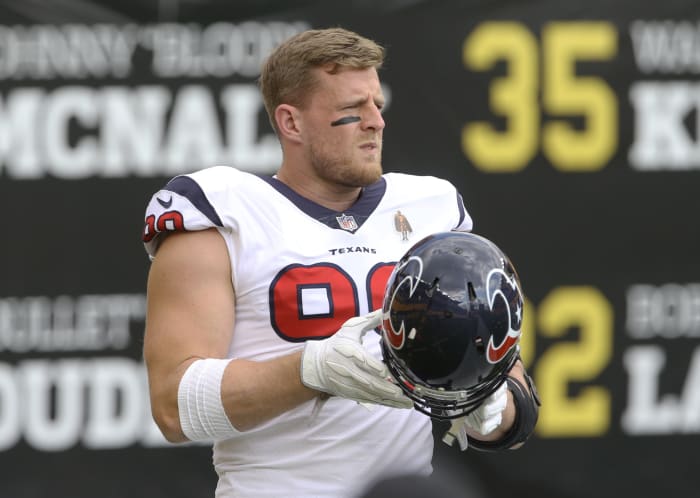
Charles LeClaire-Imagn Images
Watt’s apex outflanks Donald’s, but injuries limited the superstar Texans talent. Able to thrive on the inside and edge, Watt preceded Donald with three DPOY honors. Although Watt is the only player in the sack era to record multiple 20-sack seasons, the best statistical illustration of his stratospheric peak comes from the 21st century’s top three tackle-for-loss seasons all belonging to the 2011 Houston draftee. Watt played for two of the NFL’s least popular franchises, finishing his career a Cardinal; Jones did plenty to ensure the Chiefs climbed that list. While Mahomes and Kelce have driven Kansas City’s offense, the team has become increasingly reliant on its defense. Jones is the only pure D-tackle to record two 15-plus-sack seasons.
Second team: Chris Jones
15 of 28
Defensive line: Richard Seymour

Robert E. Klein/Icon Sportswire
Joining Ty Law and Darrelle Revis as Bill Belichick-era Patriot defenders enshrined in Canton, Seymour joined Watt in anchoring 3-4 defenses as an end while being effective inside in sub-packages. Seymour’s rookie year doubled as the Patriots’ first Super Bowl-winning slate, and he dropped Kurt Warner in that season-ender. Seymour played the run well and was the front-seven driver for three champions that did not yet have the benefit, as Tom Brady gradually ascended, of a top-tier offense. The Pats ranked first in scoring defense during their 28-4 stretch from 2003-04. Were it not for Donald peaking at the same time, Cox would likely be far better-known than he is. The Eagles DT will be a Canton candidate this decade.
Second team: Fletcher Cox
16 of 28
EDGE: Von Miller
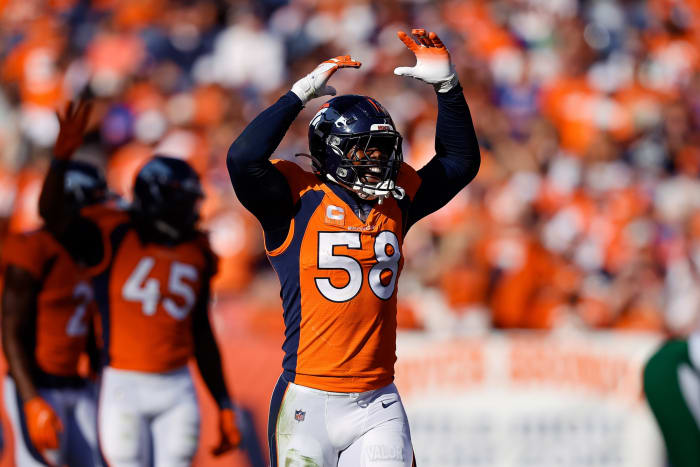
Isaiah J. Downing-Imagn Images
Offering one of the great get-offs in NFL history, Miller has paired that with unique bend and deceptive power that allowed him to punish right tackles for over a decade. Miller managed to become an elite pass rusher despite initially playing as a 4-3 outside linebacker, only shifting to a traditional 3-4 EDGE in 2015. That year effectively cemented Miller’s Canton case due to his takeovers in the AFC championship game and Super Bowl 50. Collecting a second Super Bowl title as a Rams mercenary ensured a place among the all-timers. Teaming with Ware provided a midcareer boost, with the former Cowboys dynamo maximizing the back end of his prime by delivering steady pressure to close out that Broncos championship season.
Second team: DeMarcus Ware

Barry Reeger-Imagn Images
It is no longer premature with the younger Watt superstar. He obviously trails Hall of Famers Peppers and Dwight Freeney in sacks, but in terms of impact, he has them beat. A four-time First Team All-Pro before age 30, Watt is the only sack-era player to lead the league in that stat three times. His sharing of Michael Strahan’s scrutinized sack record, getting to 22.5 in 15 games, should take away some of the sting for Mark Gastineau. Since 2017, the Steelers are 1-10 when Watt misses a game. Peppers took his hoops athleticism and coasted to Canton, becoming the NFL’s fourth all-time leading sacker (159.5). Not quite the dominant force Watt has become, Peppers managed to be a productive pass rusher until retiring at 39.
Second team: Julius Peppers
18 of 28
Linebacker: Ray Lewis

Jeff Lewis/Icon Sportswire
Four of Lewis’ seasons occurred in the 1990s; it is safe to say he did enough post-2000. Joining Mike Singletary as the only non-pass rushers to be named Defensive Player of the Year twice, Lewis anchored this century’s greatest defense (the 2000 Ravens outfit) and teamed with Ed Reed to keep it an upper-crust unit for most of his career’s remainder. The tenacious inside linebacker transitioned well from the more physical 2000s NFL into a sleeker version for an increasingly pass-focused league, though the Raven alpha’s best work came in the early aughts. The player who passed Lewis as the game’s top off-ball linebacker was the centerpiece of three dominant 49ers defenses in the early 2010s, but Willis hung up his cleats after eight seasons.
Second team: Patrick Willis
19 of 28
Linebacker: Bobby Wagner

Joe Nicholson-Imagn Images
Wagner may not have delivered a Willis-like peak, Tony Dungy’s 2014 MVP vote notwithstanding, and Brooks’ career might be better. But Willis retired early and five Brooks seasons occurred in the 1990s. Wagner deserves credit for longevity, outlasting Luke Kuechly and amassing an astounding run of 10 straight seasons with a first- or second-team All-Pro booking. Wagner’s 2014 return from injury revitalized a Super Bowl-bound team, and he became the enduring staple from Pete Carroll’s defenses. Wagner’s first four seasons helped the Seahawks become the first team since the 1950s to lead the NFL in scoring defense in four straight years. Brooks delivered one of the great linebacker seasons in NFL history, spearheading the 2002 Buccaneers’ Super Bowl run, and was a linchpin in Monte Kiffin’s Tampa-2 scheme.
Second team: Derrick Brooks
20 of 28
Cornerback: Champ Bailey
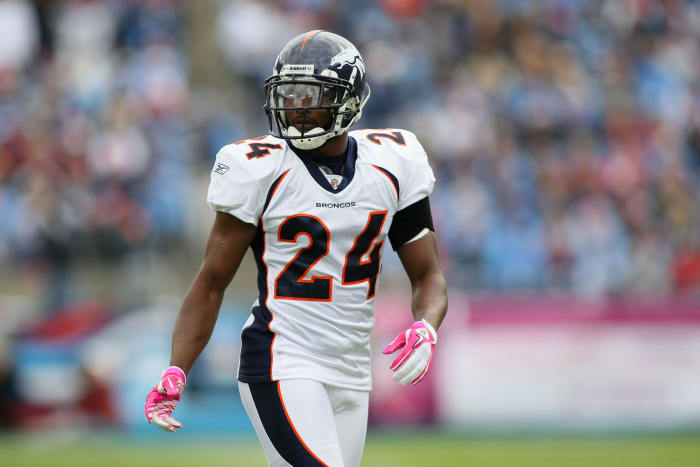
Greg McWilliams/Icon Sportswire
Few defensive backs, let alone corners, can match Bailey’s prime duration. The 1999 first-round pick played well enough to earn a CB-record (12) Pro Bowl invites; no other corner has drawn more than nine. Blossoming in Washington, Bailey delivered his best work in Denver — after Mike Shanahan’s seminal (regarding running back value) trade of Clinton Portis — by intercepting a combined 18 passes from 2005-06. As QBs picked on other Bronco corners during his late prime, Bailey still managed a second-team All-Pro honor at age 34 in 2012. Peterson’s positive PED test separating his Pro Bowl seasons (seven as a corner) from his non-Pro Bowl years would matter more in baseball. The Cardinals shutdown CB still traveled with WR1s more than top peer Richard Sherman.
Second team: Patrick Peterson
21 of 28
Cornerback: Darrelle Revis
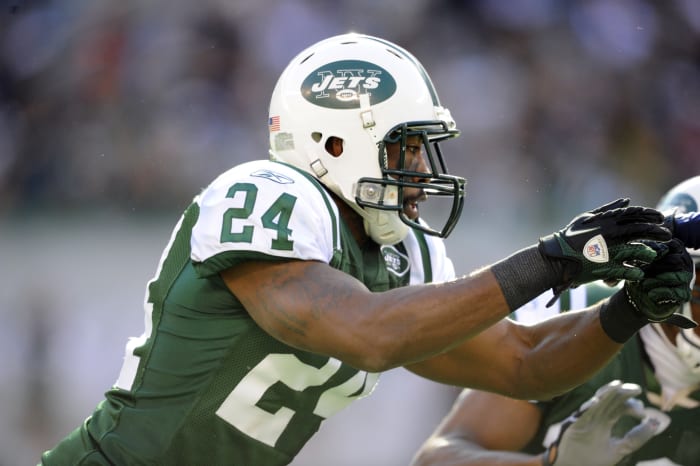
Rich Kane/Icon Sportswire
Bailey had a better career, but Revis reached a higher ceiling as a lockdown defender than just about any corner in league history. The “Revis Island” nickname — an all-timer — came as the then-Jets corner smothered opposition, with the 2007 first-rounder’s 2009 season being a time-capsule CB year. Revis did not offer too much past his peak, but he cinched up Hall of Fame entry by being a Bill Belichick rental, becoming the top corner for the 2014 Patriots squad. Law played five 1990s seasons but did his best work in the early 2000s, particularly in the playoffs, to anchor Belichick’s secondary. Law’s pick-six on Kurt Warner in Super Bowl XXXVI and his three thefts of Peyton Manning in the 2003 AFC decider were crucial contributions as this century’s premier dynasty spawned.
Second team: Ty Law
22 of 28
Defensive back: Charles Woodson
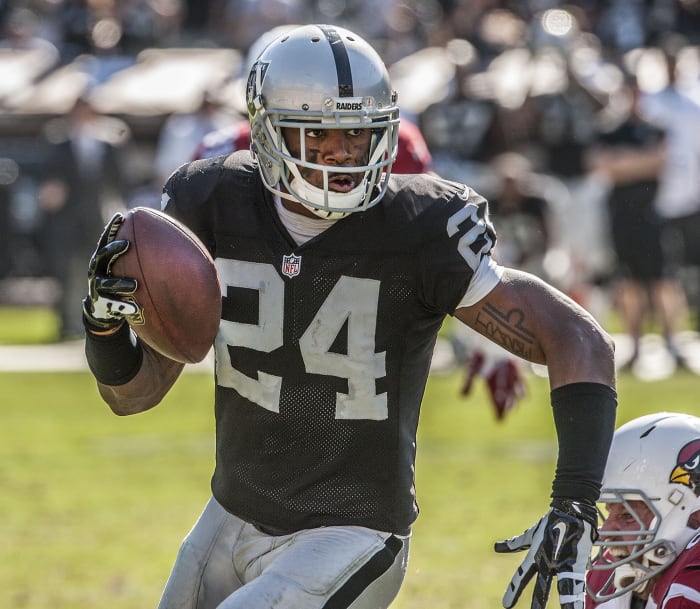
Al Golub/Icon Sportswire
This catch-all section should not diminish Woodson’s standing, as he was both an avoided corner like Revis and delivered Bailey-like longevity. Woodson shined as a Raiders shutdown corner and then became an impact Packer free agent (a rarity under Ted Thompson). Woodson also patrolled the slot in Green Bay, providing a transition to a late-career safety place back in Oakland. Tied for fifth all-time in INTs, with 65, Woodson is one of only two corners to win Defensive Player of the Year (2009) this century. Barber played nearly as long and paved the way for future slot specialists by mastering inside coverage in Monte Kiffin’s Tampa-2 setup, becoming one of four Hall of Famers from that defensive nucleus.
Slot: Ronde Barber

Jim Cowsert /Icon SMI/Icon Sport Media via Getty Images
Quieter than Ray Lewis, Reed was every bit as good at his job. Considering the impact Reed had and the offense-fueled era in which he played, he is probably the greatest safety in NFL history. Reed flashed unparalleled playmaking skills at the position, turning his 64 INTs (seventh all-time) into 1,590 return yards (most ever). The Raven coverage maven totaled 13 career touchdowns, breaking his own record for longest pick-six (107 yards) on one such play. Reed was instrumental in the Ravens maintaining their place as an elite defense late in Lewis’ career. Thomas’ Baltimore stay ended up cutting his career short, but he powered Seattle’s Legion of Boom secondary and will have a Hall of Fame case.
Second team: Earl Thomas
24 of 28
Safety: Troy Polamalu

Patrick Green/ Icon Sportswire
The 1-B to Reed’s 1-A, Polamalu made more impactful plays near the line of scrimmage and was omnipresent during the Steelers’ two Super Bowl runs in the aughts. After driving the secondaries during Pittsburgh’s 2005 and ’08 defenses — the latter an underappreciated force — Polamalu powered the Steelers defense to a third Super Bowl with a DPOY showing in 2010. Dawkins provided an intimidating presence, operating as the emotional leader of the Andy Reid-era Eagles defenses and remaining a useful defender into his late 30s in Denver. The four-time All-Pro’s borderline maniacal pregame routines represent one of the enduring images of those Philly squads.
Second team: Brian Dawkins
25 of 28
Kick returner: Cordarrelle Patterson
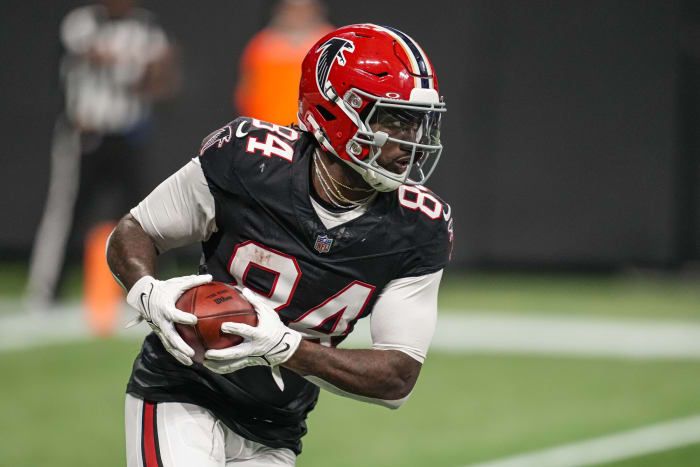
Dale Zanine-Imagn Images
Spoilers: Devin Hester is the punt returner; Patterson, however, was the Hall of Fame-worthy specialist’s superior in the other return skill. The rare elite return man not asked to do both, Patterson (one career punt return) has nine kick-return TDs — most in NFL history. One of the biggest return men in NFL annals, at 220 pounds, Patterson has excelled at a skill that the NFL has continued to marginalize this century. Cribbs’ heyday still featured regular kick-return opportunities, and the Cleveland weapon tied with Leon Washington to hold the previous record (eight), until Patterson surpassed it in 2023.
Second team: Josh Cribbs
26 of 28
Punt returner: Devin Hester
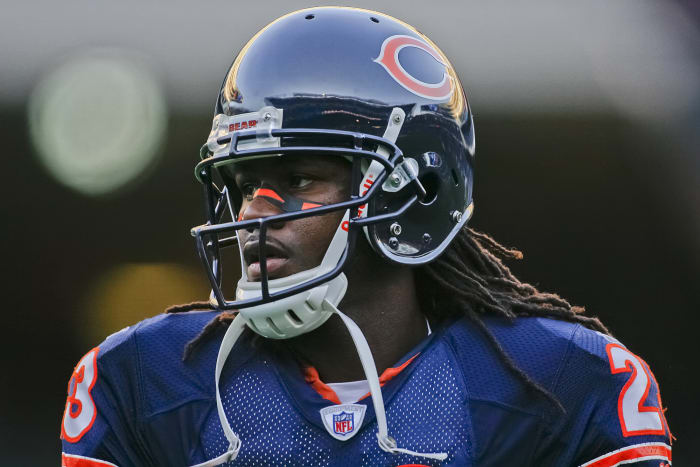
Robin Alam/Icon Sportswire
Hester sits four punt-return scores ahead of the next-closest player throughout the league’s history, taking 14 back for TDs during a nine-year career. The Bears rarely enjoyed the luxury of an upper-echelon offense during Hester’s Chicago run, but their returner overdelivered to help those oft-struggling units. Hester racked up seven punt-return scores — most memorably his game-winner against the Cardinals to set up Dennis Green’s postgame rant for the ages — over his first two seasons and broke the NFL record in his sixth year. Hall’s prime as a Chief still featured regular kick-return chances, with the kickoff still at 30-yard lines. Powered by his 2003 stretch of four straight games with a return TD, the Chiefs’ shifty specialist accumulated 12 kick- and punt-return scores (six apiece).
Second team: Dante Hall
27 of 28
Kicker: Justin Tucker

Jessica Rapfogel-Imagn Images
Field goal kicking continues to evolve, with each wave of kickers more accurate than past eras. Tucker has seen younger options rival his accuracy, but the Ravens all-time great still holds the success-rate mark despite being in his 13th season. Tucker played an integral role in the Ravens appearing in and then winning Super Bowl XLVII and has provided Baltimore with historic special teams security. Tucker hitting a 66-yard game-winner to down the Lions in 2021 best illustrated the luxury the Ravens possess. Vinatieri, however, still holds the league’s scoring record, with the Patriots and Colts option playing 24 seasons. Not on the accuracy plane of an elite modern kicker, Vinatieri was his era’s best and made some of the most important kicks in league history.
Second team: Adam Vinatieri
28 of 28
Punter: Shane Lechler

Al Golub/Icon Sportswire
Stringing together punting accolades can be difficult, but Lechler is the standard. Even including the position’s lone Hall of Famer (Ray Guy), Lechler collected six First Team All-Pro honors during his 18-year career. The accolade sextet came during Lechler’s Raiders run (2000-12), but the longtime Sebastian Janikowski practice come-with guy remained solid in Houston and also added three second-team nods. Hekker matched up with Ryan Allen in a Super Bowl LIII punting duel, which meant more in a 13-3 game, and is a four-time first-teamer. A new generation of punters is taking aim, however, as Sammy Baugh’s generations-old single-season average record has fallen in the 2020s. The current wave’s progress will be interesting, especially for punting enthusiasts, to monitor.
Second team: Johnny Hekker
Sam Robinson is a sportswriter from Kansas City, Missouri. He primarily covers the NFL for Yardbarker. Moving from wildly injury-prone sprinter in the aughts to reporter in the 2010s, Sam set up camp in three time zones covering everything from high school water polo to Division II national championship games. He has since settled in as the husband of a track and field coach, concentrating on the NFL. Boasting an unhealthy interest in the league’s history and fashion trends, Sam is the lead writer for Pro Football Rumors and has written about the sport for Yardbarker since 2018. In addition to working as a writer/editor for a few newspapers – the Cleveland Plain Dealer and St. Joseph (Missouri) News-Press, to name two – in a former life that included some awkward awards-show hosting gigs thankfully inaccessible online, Sam has written about the Olympics for The Athletic.





